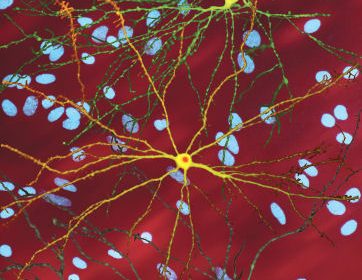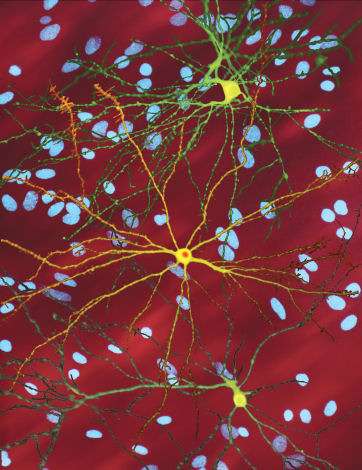New therapeutic target for Huntington’s treatment

Huntington’s disease is caused by a mutation in the Huntingtin gene (HTT), which appears in adults and features motor, cognitive and psychiatric alterations. The origin of this disease has been associated with the anomalous functioning of the mutated protein mHTT, but recent data showed the involvement of other molecular mechanisms.
A new study conducted by the University of Barcelona has identified a type of ribonucleic acid (RNA) as a potential therapeutic target for the treatment of the disease. These are the small RNAs, or sRNAs, molecules that do not code proteins but have important functions in the regulation of gene expression. According to the study, sRNAs would take part in the development of the disease, results that shed light on the design of new specific drugs to block the activity of these intermediary molecules that help researchers to understand the information in the genes.
The study, published in the journal Acta Neuropathologica, counts on the participation of two teams from the Institute of Neurosciences of the UB, led by the lecturers of the Faculty of Medicine and Health Sciences Eulàlia Martí, also researcher at the Epidemiology and Public Health Networking Biomedical Research Centre (CIBERESP); and Esther Pérez-Navarro, also researcher at the Biomedical Research Networking Center on Neurodegenerative Diseases (CIBERNED) and the August Pi i Sunyer Biomedical Research Institute (IDIBELL), the Center for Genomic Regulation (CRG) and the University Medical Center Göttingen (Germany).
An innovative technique
The objective of the researchers in the study was to understand the toxic potential of the series of sRNAs that are created in the brain of patients with Huntington’s disease. The researchers note that the identification of toxicity mechanisms is important to understand how the disease evolves and to design the right drugs and therapeutic strategies.
In order to solve this question, the researchers isolated sRNAs from the brains of patients with Huntington’s and from people without the disease as a comparative model. Then, they administrated the molecules into the brains of normal mice and analyzed whether the mice developed anomalies similar to those in the human disease. “This is the first time we used a human-origin RNA injection in the brains of mice, and this innovative strategy enabled us to understand the importance of these molecules independently from the protein,” notes Eulàlia Martí.
The results of this experiment show that sRNAs in patients with Huntington’s are enough to cause a similar pathology in normal mice, which includes “motor alterations, transcriptional changes similar to those observed in the human disease and mice models, specific affectation of the most affected neuronal type during the course of the disease, neuronal loss and neuroinflammation,” says the researcher.
New perspective on the role of sRNAs in the disease
These results suggest a new view on the role of the different types of sRNAs in the progression of the disease. “To date, researchers have showed that both the mHTT protein and the RNA that codes it and which has CAG repeats contribute to neurotoxicity. However, toxic effects related to RNAs with CAG repeats do not explain certain alterations that are important within the context of the pathology; for instance, the specific neuronal affectation or transcriptional alterations. These results show different types of sRNAs created in the patients’ brains would be likely to take part in the pathogenesis,” says Martí.
In this sense, the study shows that derived fragments of RNAs, tRNA fragments (tRFs), are the most altered type of sRNAs in the brain of patients with Huntington’s. The study shows that a specific tRF can cause neurotoxicity, suggesting that tRFS could participate in the damaging effects related to sRNAs in the affected patients. After this study, the main objective is to understand the functional relevance of different classes of sRNAs, with special emphasis on tRFs that are abundant in affected human brains. “Understanding the dynamics of the expression of toxic classes in brain regions and in the evolution of the disease is crucial to have a full view of their implication in the pathological process,” says Eulàlia Martí.
Potential biomarkers
Moreover, these molecules could become potential biomarkers of the disease, since there is multiple evidence to show that changes in the RNAs expression occur before the manifestation of the symptoms. Authors say that “these changes can be reflected in biofluids such as plasma and this fact can grant these types a great value as biomarkers.”
Source: Read Full Article
